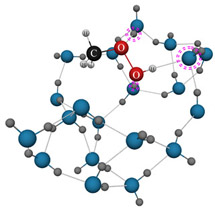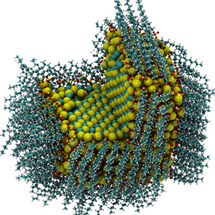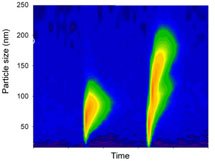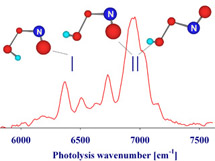|
The Earth's atmosphere can be viewed as an enormous reaction vessel where thousands of different physicochemical processes take place in parallel in a highly inhomogeneous and dynamic environment. Atmospheric chemists understand many of these reactions well. For example, gas-phase photodissociation processes involving simple atmospheric molecules such as NO2, NO3, O3, H2O2, etc. have been studied extensively over a broad range of experimental conditions. Chemical mechanisms of many critical atmospheric gas-phase reactions, such as oxidation of volatile organic hydrocarbons by OH, are also reasonably well understood. On the other hand, our knowledge of chemical reactions involving aerosols, small particles of liquid or solid material suspended in air, is far from complete. Our lack of understanding of atmospheric aerosol represents an important gap in our knowledge because aerosols play a critical role in controlling climate, driving atmospheric chemistry, and contributing to air pollution problems worldwide. The goal of our research is to improve our understanding of atmospheric aerosol chemistry through laboratory and field measurements on different types of aerosols. Go to the following links to learn more about the on-going and previous research projects.
On-Going Projects
 |
Molecular Composition and Properties of Organic Aerosols
The molecular composition of aerosol particles is ultimately controlling their health and climate effects. We are using state-of the-art high resolution mass spectrometry methods to characterize the composition of organic aerosol particles, with a focus on secondary organic aerosol (SOA) and biomass-burning organic aerosol (BBOA). We also study how the important properties of organic aerosols, such as their viscosity and volatility, are linked to their molecular composition. To learn more about this topic please check the collections of our papers on composition of SOA, composition of BBOA, and aerosol particle viscosity. Related to this topic, we also published a few papers on composition and properties of smoke from traditional cigarettes, hookah pipes, and vaping devices. |
 |
Photochemical and Dark Aging of Organic Aerosols
Solar radiation drives complicated photochemical processes not only in the gas phase but also inside organic aerosol particles and inside cloud/fog droplets containing dissolved organic compounds. We are investigating mechanisms of these photochemical reactions and their effect on the composition and properties of organic aerosols using various photochemical instruments designed by our group members. We also study non-photochemical aging driven by thermal processes, such as acid-catalyzed hydrolysis. To learn more about this research topic please check the collection of our papers on photodegradation of organic aerosols, photochemistry of select atmospherically-relevant compounds, photosensitized processes in aerosols, ROS in aerosols, and dark aging processes in aerosols. |
 |
Chemistry of Brown Carbon
Reactions between various aerosol constituents can change important properties of aerosols including their toxicity, ability to absorb solar energy, and ability to form clouds. Our group members investigate the mechanisms of these processes with a particular focus on the formation and degradation of organic aerosols that absorb near-UV and visible radiation, known as brown carbon. Please refer to our papers on the formation of brown carbon from reactions between carbonyl compounds and amines, photooxidation of VOCs, Fe-catalyzed chemistry, and biomass and urban material burning. |
Previous Projects
 |
Water Uptake by Nanoparticles
Condensation of water on particles is one of the most important physical processes in the atmosphere because it leads to eventual cloud formation. We previously investigated the effects of size, shape and chemical composition of nanoparticles on their ability to absorb water from the environment using experiments, molecular dynamics simulation, and theory. Papers on this topic are in this collection of papers. |
 |
Indoor Air Chemistry of Ozone
People spend more than 90% of their lives indoors, yet so little is known about chemistry of indoor air. Early in the group's history, we published a few papers on reactions between ozone, a common indoor air pollutant, and molecules emitted by common household products such as carpet cleaners. |
 |
Pre-UCI Research
This section describes graduate research on ionic complexes and postdoctoral research on atmospheric kinetics, spectroscopy, and reaction dynamics done by Prof. Nizkorodov before he came to UCI. |
|


